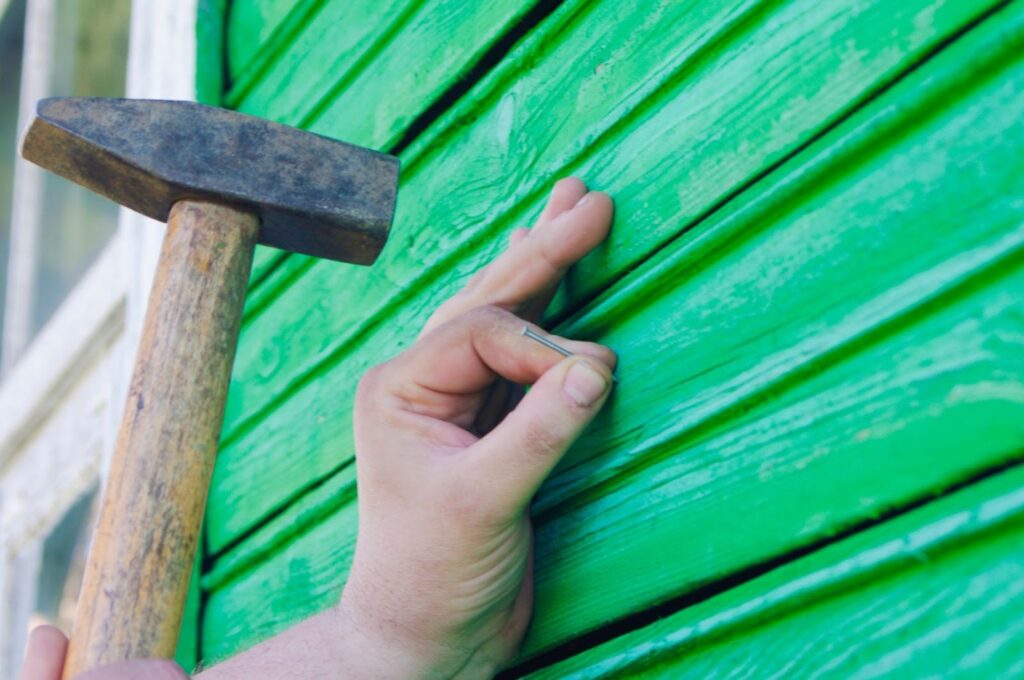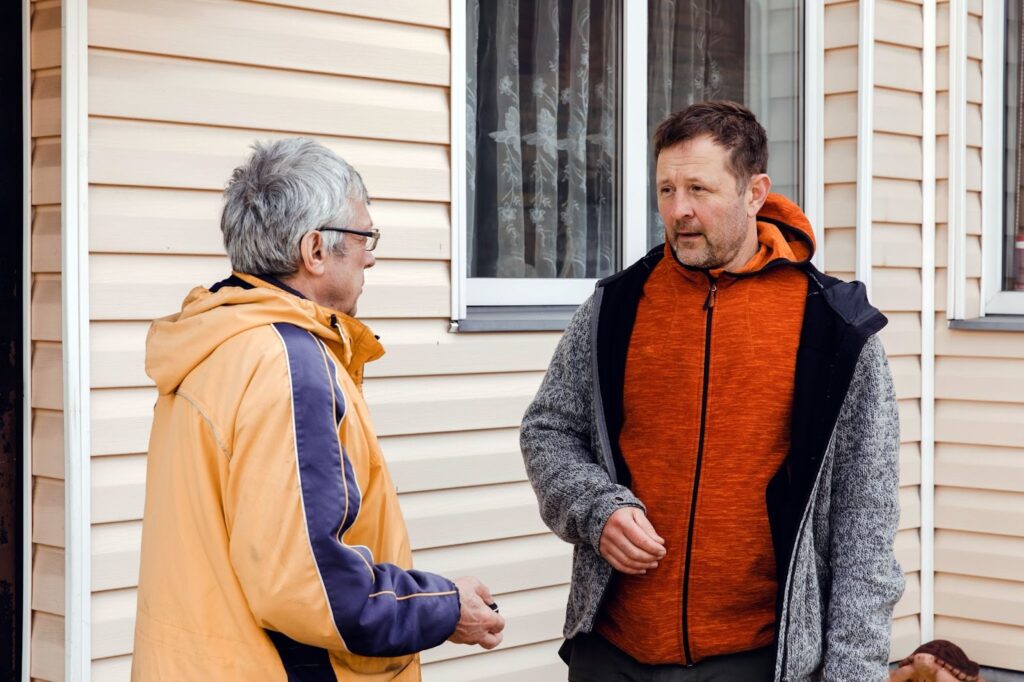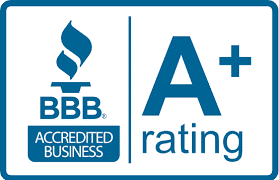
Every homeowner eventually faces the reality that their siding won’t last forever. Cracks, fading, and warping often signal it’s time for replacement, not just repairs. New siding does more than refresh curb appeal; it protects your property, enhances insulation, and raises resale value. Understanding the cost of replacing siding helps property owners make informed, confident decisions that benefit their homes for years.
Understanding the Real Cost to Replace Siding
The cost of replacing siding depends on several interconnected factors that shape the total project expense. Homeowners typically pay anywhere from $6,000 to $25,000 based on material type, home size, and labor requirements. Regional labor rates and architectural complexity can shift pricing considerably. By understanding these elements, you can predict your project’s real cost rather than relying on national averages that don’t match your situation.
Material Type and Its Impact on Pricing
Material choice drives the largest share of the siding replacement cost. Vinyl is usually the most affordable, offering durability and minimal upkeep. Fiber cement and engineered wood provide longer lifespans and stronger protection against weather, but they cost more to install. Wood siding gives a timeless look yet requires frequent sealing or staining. Metal siding, such as steel or aluminum, provides a modern, sleek finish that performs well in extreme climates. Each option influences total spending differently, depending on installation needs and longevity expectations.
Home Size and Exterior Design Complexity
A home’s size and layout directly affect how much siding it needs and how long installation takes. Larger homes naturally use more materials and require longer labor hours. Complex architectural designs, featuring peaks, corners, and trims, add difficulty that raises labor costs. Simpler exteriors with flat surfaces and fewer obstacles usually cost less to replace. Homeowners should consider both surface area and design details when budgeting. This ensures they account for hidden expenses that may arise once installation begins.
Labor Costs and Contractor Skill Level
Labor rates are a significant part of siding expenses and vary by region. Experienced siding contractors charge more, but they bring precision, speed, and warranty-backed results. Less skilled labor might appear cheaper, but it often leads to misaligned panels or moisture gaps. Fixing those mistakes later can be far more expensive than paying for skilled work upfront. Selecting a contractor with verifiable experience protects your investment and your home’s structure. Professional expertise transforms a costly project into a long-term solution instead of a short-lived repair.
Additional Costs That Influence Siding Replacement
Replacing siding often uncovers additional expenses that go beyond the surface materials. These include old siding removal, wall repairs, insulation improvements, and finishing details. Homeowners who budget only for installation often face surprises once work begins. Accounting for these extras from the start leads to a smoother, more predictable project experience.
Removing and Disposing of Old Siding
Old siding must come off before new panels can be installed correctly. Removal costs depend on material type, home size, and disposal requirements. Homes with asbestos or older cement boards need specialized handling, which raises costs. Contractors usually charge between $1,000 and $3,000 for removal and cleanup, but these costs may vary based on location and project complexity. Proper removal also allows installers to inspect the underlying walls for hidden damage. This step ensures the new siding attaches securely and performs as expected for years.

Repairing Damage Underneath the Old Siding
Once panels are stripped away, hidden problems can appear beneath the siding. Rot, insect damage, or moisture infiltration often require repair before installing new siding. Depending on severity, these repairs can cost several hundred to several thousand dollars. Ignoring them risks ongoing structural issues compromising the home’s safety. Fixing underlying damage strengthens the base and helps new siding last longer. It’s an essential part of preserving your home’s look and performance.
Adding or Upgrading Wall Insulation
Installing new siding creates the perfect opportunity to enhance insulation. Upgraded insulation helps regulate temperature, reduce noise, and lower energy bills. Options include foam board, house wrap, or insulated siding panels. Although it adds to upfront costs, these improvements pay off through reduced heating and cooling expenses. Well-insulated walls also protect against moisture buildup and mold growth. In the long term, the added efficiency can save homeowners more than they initially spent.
Finishing Touches and Design Enhancements
Trim, soffits, and fascia boards complete a home’s polished appearance. Upgrading these elements adds cost but increases curb appeal and protection. Painting, caulking, and installing decorative details bring visual consistency across the exterior. Neglecting them can leave exposed edges that allow water intrusion. Investing in quality finishes ensures your siding looks refined and functions correctly. The added visual appeal also boosts property value immediately after installation.
Average Cost to Replace Siding by Material Type
Each siding material has its own pricing, advantages, and maintenance needs. Costs vary by product, location, labor rates, and home design. Choosing the right material means weighing initial cost against long-term performance. Homeowners can use these typical ranges as a starting point for planning realistic budgets. Pricing estimates are based on current industry averages and may vary depending on region, market conditions, and supplier rates. All costs are subject to change over time.
Vinyl Siding Cost Range and Benefits
Vinyl siding usually costs between $4 and $9 per square foot installed. It remains the top choice for homeowners due to its affordability, low maintenance, and variety of styles. Vinyl resists moisture, pests, and fading better than wood. Cleaning requires only soap and water, keeping maintenance simple. While cheaper varieties can crack in extreme weather, mid-grade vinyl offers excellent durability. For most homeowners, vinyl provides the best balance between budget and long-term value.
Fiber Cement Siding Price and Performance
Fiber cement siding costs between $7 and $13 per square foot installed. It’s made from a mix of cement, sand, and cellulose fibers, offering superior strength. The material resists rot, insects, and fire better than most other siding types. Although heavier and more labor-intensive to install, its lifespan often exceeds 30 years. Fiber cement also holds paint exceptionally well, maintaining a fresh look longer. Many homeowners see it as a lifetime investment rather than a routine upgrade.
Natural Wood Siding Costs and Appeal
Wood siding ranges from $8 to $15 per square foot, with cedar and redwood being the most popular species. Its warm, natural beauty enhances nearly any architectural style. However, wood requires consistent upkeep, including sealing and painting every few years. Failure to maintain it properly can lead to warping or decay. The maintenance tradeoff is often worth it for homeowners drawn to its authenticity. Choosing prefinished or treated wood can extend longevity while reducing upkeep time.
Metal and Engineered Wood Options
Metal siding, including aluminum and steel, typically costs between $7 and $12 per square foot. It withstands harsh conditions, resists fire, and requires minimal maintenance. Engineered wood, on the other hand, costs around $6 to $11 per square foot. It replicates the look of natural wood with added resistance to rot and insects. Both materials provide modern aesthetics and reliable strength. Their appearance, resilience, and lifespan make them popular for homeowners seeking lasting performance.
Smart Ways to Lower the Cost to Replace Siding
By planning strategically, homeowners can manage siding expenses without sacrificing quality. Careful scheduling, material selection, and contractor comparison can lead to meaningful savings. Additionally, preparing your property before installation shortens labor time and reduces fees. Small decisions made early can significantly affect total project costs.
Comparing Multiple Contractor Estimates
Requesting several written estimates gives homeowners better insight into fair pricing. Each quote should list material types, labor costs, timelines, and cleanup details. Comparing side by side helps reveal overpriced bids or missing expenses. Beyond price, assess a contractor’s reputation, experience, and warranty offers. Contractors who provide detailed breakdowns deliver more transparent, dependable service. Informed comparison helps secure both fair costs and quality outcomes.

Choosing the Right Siding Material for Savings
Selecting a siding material that aligns with your climate and budget reduces long-term costs. Vinyl or engineered wood often offers better value for moderate temperatures, while fiber cement suits areas with intense weather. Durable materials require fewer replacements and less maintenance over time. Opting for slightly higher-quality siding may cost more upfront, but it saves money. Discussing material options with an experienced installer helps balance durability and affordability effectively. This strategic choice maximizes value without overextending your budget.
Timing the Project for Lower Costs
Siding projects tend to cost less during off-peak seasons, such as late fall or winter. Contractors often have more flexible schedules and may offer competitive pricing during slower months. Weather permitting, scheduling then can shorten lead times and reduce labor premiums. Planning also avoids the rush during busy summer periods. Homeowners who book early in the year often enjoy faster starts and more attentive service. Brilliant timing transforms a standard replacement into a cost-efficient upgrade.
Doing Safe Preparation Work Yourself
Taking care of simple tasks before contractors arrive can save small but meaningful amounts. Clearing furniture, trimming vegetation, and removing light fixtures give workers easier access. This preparation cuts setup time and keeps the work area safe. Avoid handling complex removal or structural tasks that require expertise. Homeowners can safely assist with minor tasks while leaving specialized work to the professionals. These simple efforts contribute to a smoother, more cost-effective installation.
Why Professional Installation Increases Siding Value
Professional installation determines how well siding performs over its lifetime. Proper alignment, secure fastening, and precise sealing prevent long-term damage. Poor installation can shorten the lifespan and reduce efficiency. Choosing skilled installers ensures you get full performance and warranty benefits from your new siding.
Craftsmanship That Extends Durability
Experienced contractors understand how different materials react to weather and expansion. Their precision prevents cracking, buckling, or gaps between panels. A well-installed siding job also improves insulation and reduces air leaks. Skilled craftsmanship not only enhances curb appeal but also ensures structural protection. Contractors who specialize in siding replacement work faster and cleaner than general laborers. Their attention to detail directly impacts how long your investment lasts.
Warranty Coverage and Long-Term Assurance
Most siding manufacturers require professional installation to maintain warranty coverage. Unlicensed or improper work can void these protections. Certified installers follow brand-specific guidelines, ensuring materials perform as tested. Homeowners benefit from both product and craftsmanship warranties, offering double protection. If issues arise years later, warranty-backed installations save thousands in repairs. This assurance makes professional labor worth the initial cost difference.
Compliance With Local Building Regulations
Licensed contractors handle building permits, code compliance, and inspections. That ensures the project meets all safety and structural standards required in your area. Ignoring regulations can result in fines or failed inspections later. Professionals know how to install according to both brand and regional codes. Compliance not only protects your investment but also adds value during resale. Meeting legal and quality standards keeps your project safe and secure from start to finish.
Explore the Real Cost to Replace Siding for Your Home
Every homeowner deserves a siding solution that fits both budget and quality expectations. The real cost of replacing siding depends on choices you control—materials, timing, and trusted professionals. Acting with clear information turns what feels like an expense into a wise investment that adds comfort, beauty, and long-term protection. Start exploring your options today with a professional consultation and see how the right siding can redefine your home’s value.
Explore theFaircloth Roofing, Inc. blog for fresh ideas, cost insights, and professional maintenance tips to get ahead on home care decisions.






